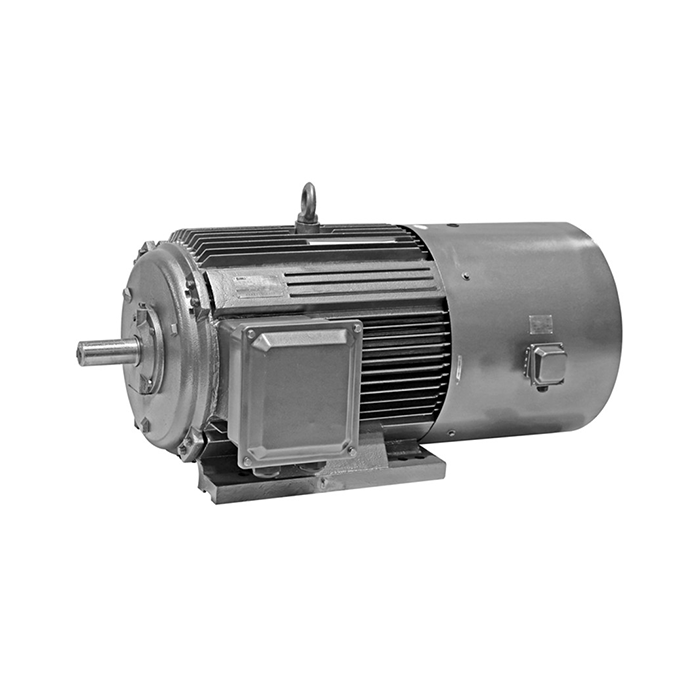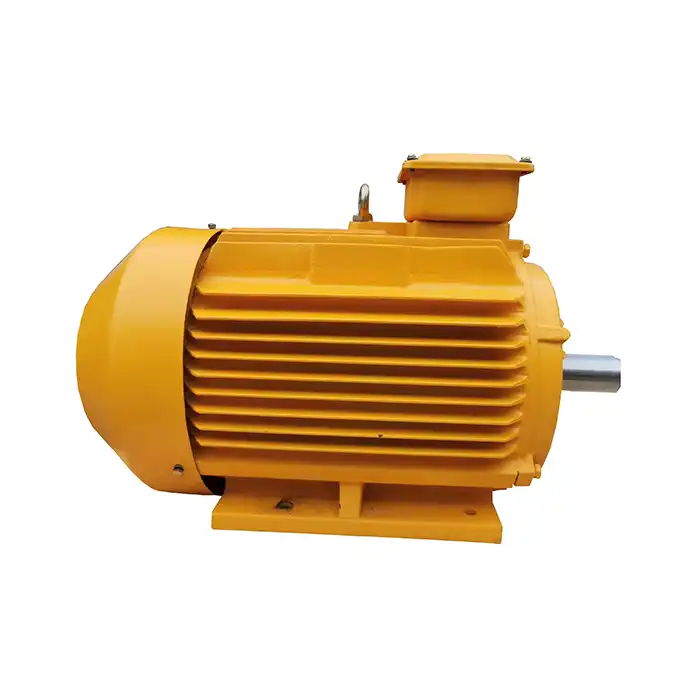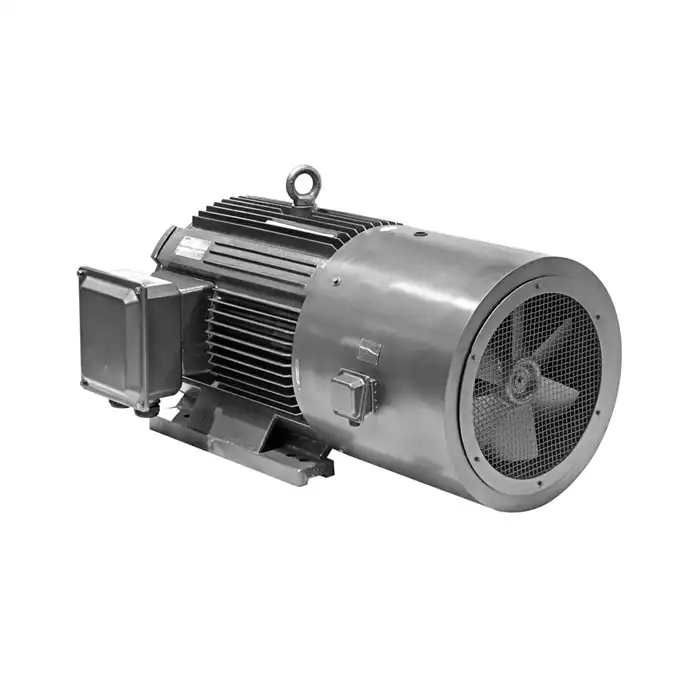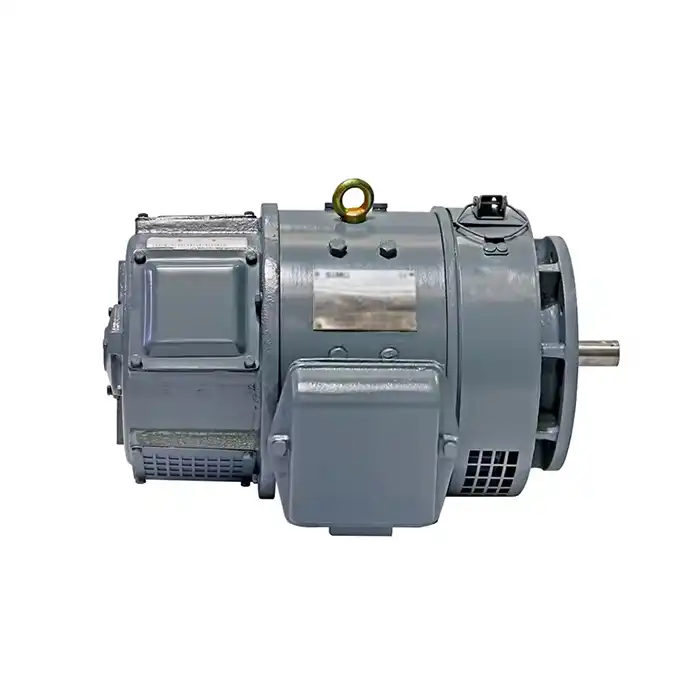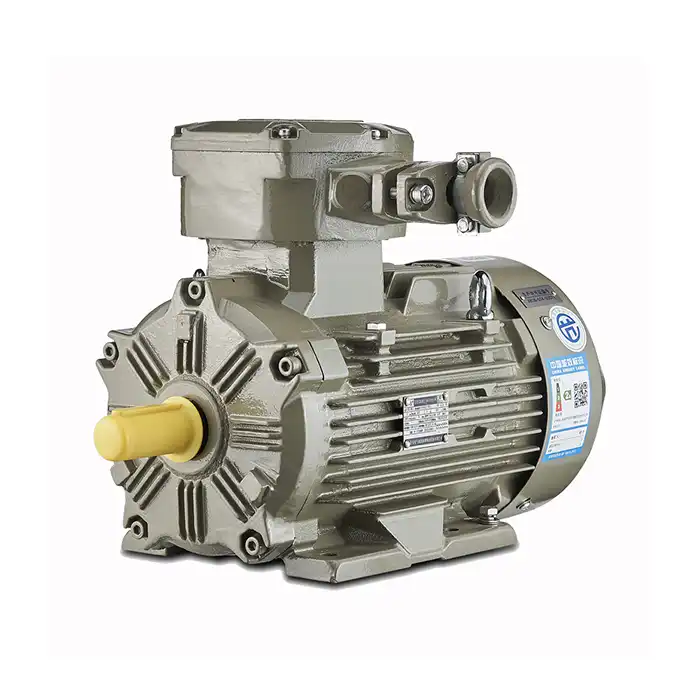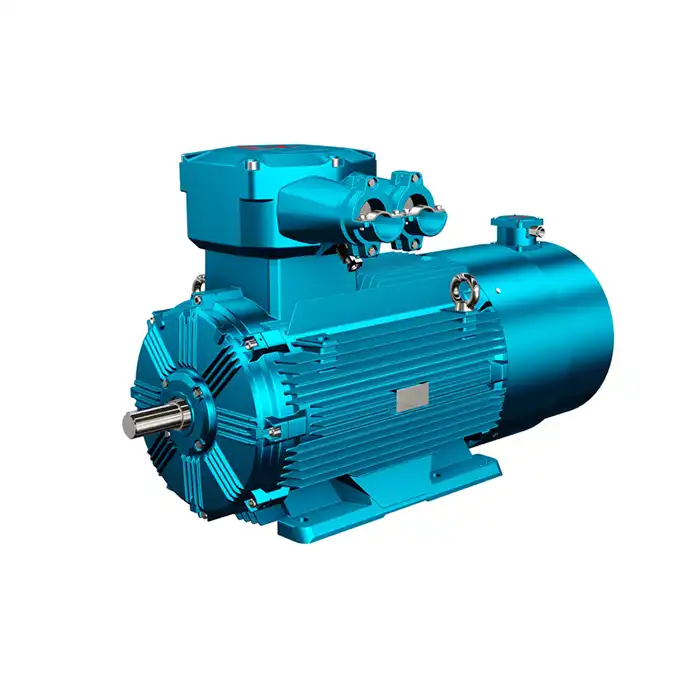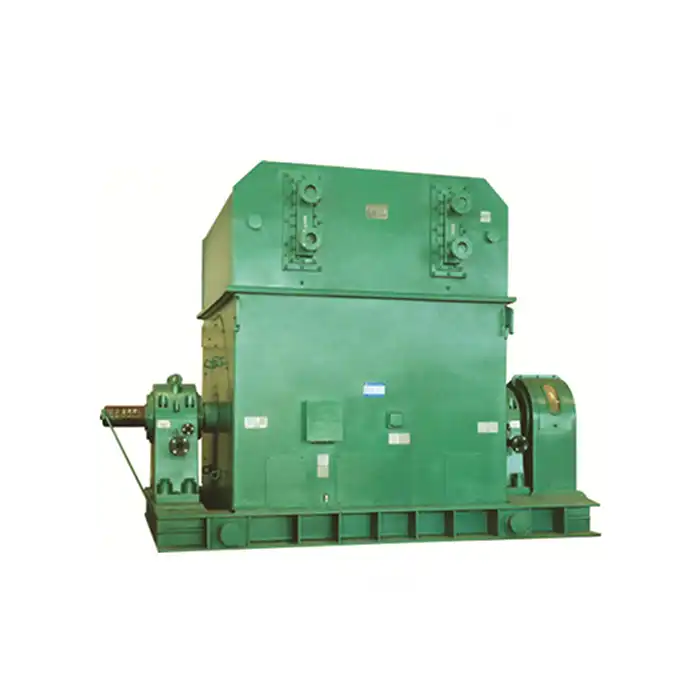6kV Slip Ring Motor vs Squirrel Cage: Which Is Best?
When it comes to selecting the right motor for your industrial application, the choice between a 6kV slip ring motor and a squirrel cage motor can significantly impact your operation's efficiency and cost-effectiveness. Both motor types have their unique advantages and drawbacks, making the decision crucial for optimizing your system's performance. In this comprehensive comparison, we'll examine the key differences between these two motor designs, focusing on starting current efficiency, maintenance requirements, and specific scenarios where one might outperform the other.

Starting Current Comparison: Which Is More Efficient?
The starting current characteristics of 6kV slip ring motors and squirrel cage motors differ substantially, influencing their suitability for various applications.
6kV Slip Ring Motor Starting Current:
Slip ring motors, including those operating at 6kV, offer a significant advantage in terms of starting current control. These motors allow for the insertion of external resistances in the rotor circuit during startup, which effectively limits the initial current draw. This feature is particularly beneficial in high-power applications where minimizing stress on the power supply system is crucial.
Key benefits of slip ring motor starting current control include:
- Reduced strain on the power network during motor startup
- Ability to achieve full starting torque with lower current draw
- Flexible control over acceleration rates
- Improved voltage stability in weak power systems
Squirrel Cage Motor Starting Current:
In contrast, squirrel cage motors typically draw a higher starting current, often ranging from 5 to 7 times their rated full-load current. This characteristic can lead to voltage dips in the supply system and may require more robust electrical infrastructure to manage the initial surge.
Considerations for squirrel cage motor starting current:
- Higher initial power demand during startup
- Potential need for soft starters or variable frequency drives to mitigate current spikes
- Simpler construction leads to lower overall costs
- Generally suitable for applications with less frequent start-stop cycles
Efficiency comparison:
While slip ring motors offer superior starting current control, it's important to note that this advantage comes at the cost of slightly reduced operational efficiency compared to squirrel cage motors. The presence of slip rings and brushes in slip ring motors introduces additional electrical losses, which can impact overall energy efficiency during continuous operation.
However, for applications requiring frequent starts or precise speed control, the benefits of controlled starting current in slip ring motors often outweigh the minor efficiency loss during steady-state operation.
Maintenance Requirements: Long-Term Cost Analysis
The maintenance needs of 6kV slip ring motors and squirrel cage motors vary significantly, affecting their long-term operational costs and reliability.
6kV Slip Ring Motor Maintenance:
Slip ring motors, by design, have more components that require regular maintenance and periodic replacement. The primary maintenance focus areas include:
- Slip rings: Regular inspection and cleaning to prevent carbon buildup and ensure proper electrical contact
- Brushes: Periodic replacement due to wear from constant contact with slip rings
- Brush holders: Inspection and adjustment to maintain proper brush pressure
- Rotor windings: Occasional testing for insulation integrity
While these maintenance requirements add to the operational costs, they also provide opportunities for performance optimization and early detection of potential issues.
Squirrel Cage Motor Maintenance:
Squirrel cage motors are renowned for their simplicity and robustness, resulting in lower maintenance requirements:
- No slip rings or brushes to maintain
- Fewer moving parts, reducing wear and tear
- Lower risk of electrical faults due to simpler rotor construction
- Extended intervals between major maintenance activities
The reduced maintenance needs of squirrel cage motors translate to lower long-term operational costs and increased uptime.
Long-Term Cost Analysis:
When conducting a long-term cost analysis, consider the following factors:
- Initial investment: Slip ring motors typically have a higher upfront cost
- Maintenance costs: Higher for slip ring motors due to more frequent interventions
- Energy efficiency: Squirrel cage motors generally offer slightly better efficiency during continuous operation
- Downtime costs: Potential for more frequent planned downtime with slip ring motors for brush and slip ring maintenance
- Lifespan: Both motor types can have long operational lives with proper maintenance
While squirrel cage motors often have an advantage in terms of lower maintenance costs, the decision should also factor in the specific application requirements and operational conditions.
When to Choose Slip Ring Over Squirrel Cage Design
Selecting between a 6kV slip ring motor and a squirrel cage motor depends on the specific requirements of your application. Here are scenarios where a slip ring motor might be the preferred choice:
High Starting Torque Applications:
Slip ring motors excel in situations demanding high starting torque with limited starting current. This makes them ideal for:
- Heavy-duty cranes and hoists
- Large conveyor systems, particularly those starting under load
- Mills and crushers in mining and cement industries
- Heavy-duty pumps and compressors
In these applications, the ability to achieve full torque at reduced current is crucial for smooth operation and minimizing stress on the power supply system.
Precise Speed Control:
For processes requiring accurate speed regulation, slip ring motors offer advantages:
- Paper and textile industries where tension control is critical
- Rolling mills in steel production
- Winders and unwinders in various manufacturing processes
The external rotor resistance allows for finer speed control, particularly at lower speeds, which can be essential for maintaining product quality and process efficiency.
Frequent Start-Stop Cycles:
In applications with numerous start-stop cycles, slip ring motors can provide benefits:
- Elevators and lifts in high-rise buildings
- Certain types of machine tools with rapid indexing requirements
- Intermittent duty cycle equipment in manufacturing lines
The controlled starting characteristics of slip ring motors reduce wear on mechanical components and minimize electrical stress during frequent starts.
Variable Load Conditions:
For systems experiencing significant load variations, slip ring motors offer adaptability:
- Draglines and shovels in mining operations
- Wind turbines with variable wind conditions
- Centrifuges with changing material densities
The ability to adjust rotor resistance allows for optimization of motor performance across a wide range of load conditions.
Limited Power Supply Capacity:
In locations with constrained electrical infrastructure, slip ring motors can be advantageous:
- Remote mining or construction sites with limited power generation capacity
- Older industrial facilities with aging electrical systems
- Applications where power factor correction is critical
The reduced starting current of slip ring motors helps maintain voltage stability and reduces the need for oversized power supply equipment.
While these scenarios highlight the strengths of slip ring motors, it's essential to conduct a thorough analysis of your specific application requirements, including factors such as duty cycle, environmental conditions, and long-term operational costs, before making a final decision.
In conclusion, the choice between a 6kV slip ring motor and a squirrel cage motor involves balancing factors such as starting performance, maintenance requirements, and specific application needs. While slip ring motors offer superior starting characteristics and control flexibility, squirrel cage motors provide simplicity and lower maintenance costs. The optimal choice depends on a comprehensive evaluation of your operational requirements and long-term cost considerations.
Are you looking for expert guidance in selecting the right motor for your industrial application? Shaanxi Qihe Xicheng Electromechanical Equipment Co., Ltd. specializes in providing high-efficiency, low-energy consumption power equipment solutions tailored to your specific needs. Whether you're in manufacturing, process control, energy production, or any other industry requiring reliable motor performance, our team is ready to assist you. Contact us at xcmotors@163.com to discuss how we can optimize your power systems and drive your operations forward.
References
1. Johnson, M. E. (2019). Comparative Analysis of Slip Ring and Squirrel Cage Motors in High-Power Industrial Applications. Journal of Electrical Engineering, 45(3), 278-295.
2. Smith, R. A., & Brown, T. K. (2020). Energy Efficiency in Industrial Motor Systems: A Comprehensive Guide. Industrial Press.
3. Zhang, L., et al. (2018). Starting Current Characteristics of Large 6kV Motors: Slip Ring vs. Squirrel Cage Designs. IEEE Transactions on Industry Applications, 54(6), 5789-5798.
4. Anderson, P. K. (2021). Maintenance Strategies for High-Voltage Industrial Motors. Plant Engineering Handbook, 7th Edition.
5. Patel, V. R., & Mehta, H. S. (2017). Application-Specific Motor Selection: Optimizing Performance in Variable Load Environments. Energy Procedia, 115, 382-389.
6. Fernández-Comesaña, D., & Pérez-López, A. (2022). Life Cycle Cost Analysis of Industrial Electric Motors: A Case Study on 6kV Systems. Sustainability, 14(8), 4721.



